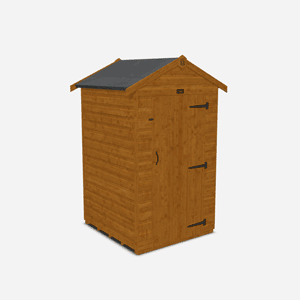Protect Your Wooden Garden Building in Winter | 5 Top Tips
Published: 20/12/2022
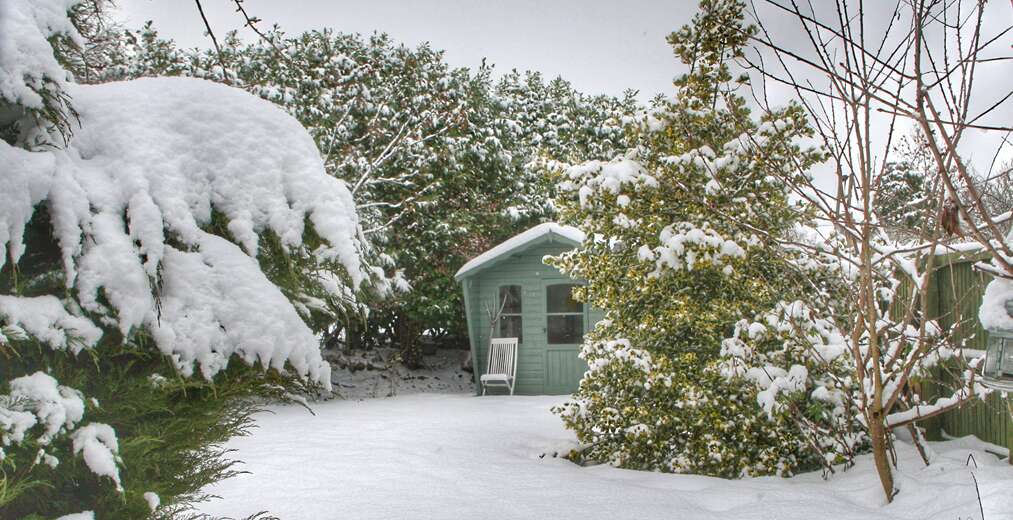
Wooden garden buildings including garden sheds, summerhouses and log cabins can easily deteriorate in harsh weather conditions, so it’s essential that you protect your investment by giving it some essential TLC.
When it comes to choosing a shed for your garden, you want one that not only matches the look and feel of your garden space, but you want it to be durable, robust, and reliable in the long run. In other words, you need something that will look good both outside and inside for years to come. You also need something you can rely on time and time again to keep your belongings dry and protected from the elements and ensure it’s a constant usable space.
Wooden sheds can soon decay and start to show symptoms of wear and tear if they are not adequately secured and taken care of.
With temperatures plummeting and yellow warnings for snow and ice across the UK, Brits are being warned about the damage this can do to a garden shed.
Despite the time of year, over 80,000 people in the past month took to Google to search their shed queries - asking questions including ‘How to insulate a shed?’ and ‘How to weatherproof a shed?’ - as people worry about how to protect them from wintery conditions.
To help prevent issues with your shed this winter and for years to come, there are a few simple and cost-effective things you can do to prevent your shed from deteriorating and ultimately increasing its longevity.
Here are our 5 top tips to protect your wooden garden building:
1. Seal Openings
One of the most common issues caused by wintery weather is leaks and this can cause irreparable damage to a shed such as rotting. Have a walk around the outside and inside to inspect for holes or gaps in doors and windows. Make sure all gaps are watertight and if not, reseal them before it’s too late. If you’re worried about the internal temperature of your shed, add insulation around any cracks, windows, and doors to stop cold air from getting in. Failing to do this can cause furniture to absorb moisture and form mould, and lawnmowers, bicycles, or other metal items may rust.
2. Prevent Moisture Inside
Wintertime can cause cold-sensitive materials like metal and glass to become very cold and cause mildew to form inside the shed.

The air can become stagnant and retain a lot of moisture, but it’s easy enough to reduce moisture by taking a few quick, inexpensive measures.
There needs to be good air flow within a shed to prevent moisture from building up, which is why it’s important to leave space around things you’re storing in there, ensuring not to cram the space full.
Remember to keep the air circulating and open the windows and doors every few days to reduce the build-up of stagnant air or pop the heating on if you’re hooked up to the electrics.
If your shed already has an air vent then this is not necessary as there should be ample air flow, just make sure your vent isn’t blocked.
3. Boost your Roof Felt
Copious amounts of snow or water that becomes ice can put a lot of pressure on a shed roof which could in turn, damage it. Before a heavy downpour or icy spell, check the roof for damage and make sure it is securely fastened. Test its strain to make sure it will cope with extreme conditions. When it does snow, use a brush and push the snow or ice onto the ground to make sure that there isn’t too much tension on the roof. Or if it's looking worse for wear then it's worthwhile replacing the roof felt.
4. Treating the Shed
At some point, snow and ice will turn into water so ensure that your shed is ready to cope with that.
If you’ve already invested in a pressure treated garden building, then these sheds have undergone a careful tanalisation process to guarantee you get what you pay for.
The wood that has been dried naturally with a stream of warm air or an oven in the production process. Once completely dry, the wood is placed in wood preservative and placed in a tank used for the pressure-treated wood treatment; a vacuum sucks the air out of the tank. This produces hard-wearing wood that can withstand the elements and last - even after decades of use.
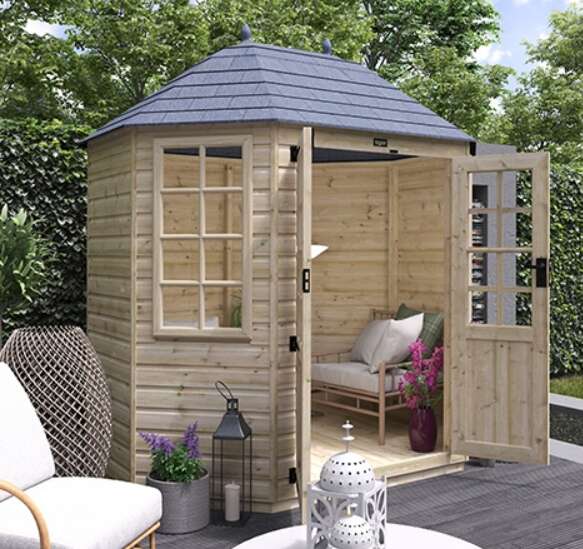
Tiger Elite Pressure-Treated Octagonal | Tiger Sheds
Tanalised sheds are much better protected against weather damage. They hold up well in harsh weather and don't require as much maintenance as their untreated counterparts. At Tiger Sheds we offer pressure treated log cabins, sheds and more for the ultimate in protection - all carefully built in the heart of Yorkshire by our expert craftsmen.
If you don’t have a pressured treated shed, it’s important to treat your garden building at least once a year – starting from when you first build your shed. This will help to stop rot and ensure damp and mould won’t develop in your shed.
Shed maintenance is unavoidable – but with a reliable shed paint or shed preservative, you’ll get the job done in no time. Easy to apply and could help extend your shed’s life beyond Tiger’s 20-year guarantee.
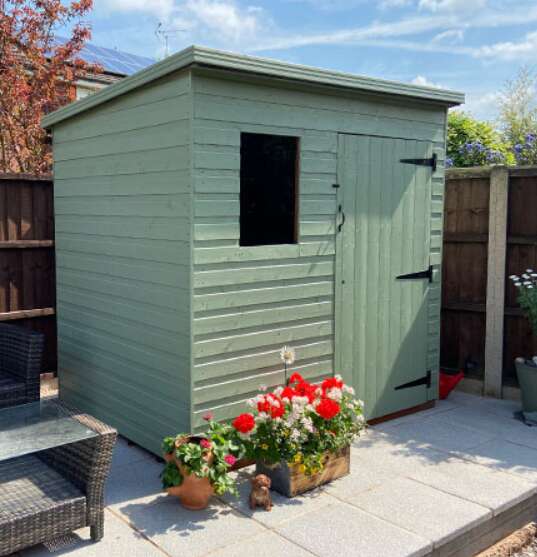
Tiger Shiplap Pent Shed | Wooden Shiplap Sheds | Tiger Sheds
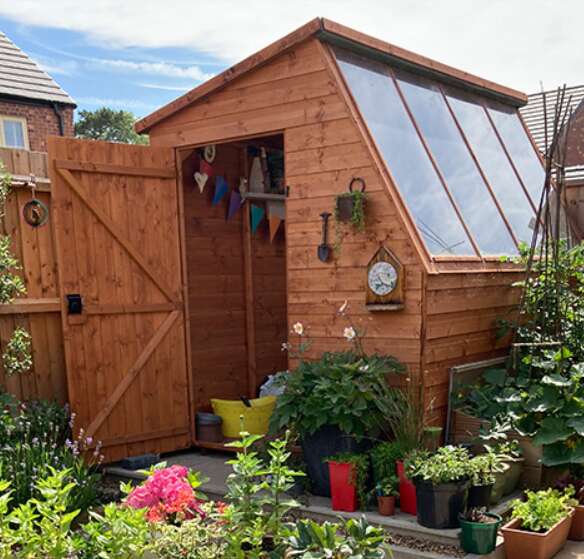
Tiger Potting Sheds | Garden Potting Shed | Tiger Sheds
For more expert advice on this subject, check out our post on shed treatment.
5. Strengthen the Locks
With exceedingly cold weather comes the chance of locks and padlocks freezing, which can cause problems when you next try get into your shed. Apply a lubrication substance such as oil or WD 40 on any moving parts, including the hinge and keyhole as this will stop both the door from seizing up and the key from becoming stuck once the weather subsides.

Sam Jenkinson of Tiger Sheds commented: “When wintery conditions arrive, many of us don’t think about the impact this can have on our sheds, but the cold and often extreme weather can cause irreparable damage, especially to wooden sheds and outhouses. We hope that the current cold blast doesn’t cause too much trouble for garden lovers, but we advise to take that extra precaution to ensure a shed is protected as this will give you added peace of mind.
“Nobody wants to face extra financial consequences from failing to prepare, so spend some time doing maintenance for your shed now using these simple tips and save yourself the trouble further down the line.”


